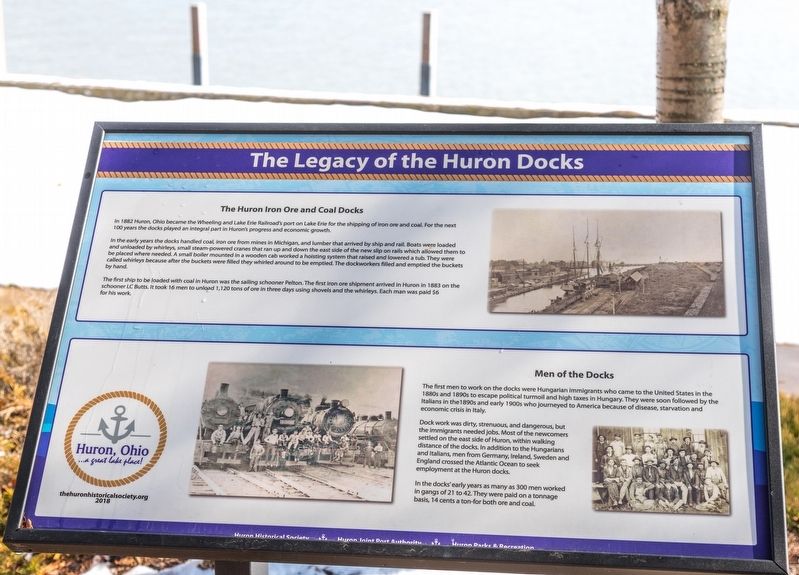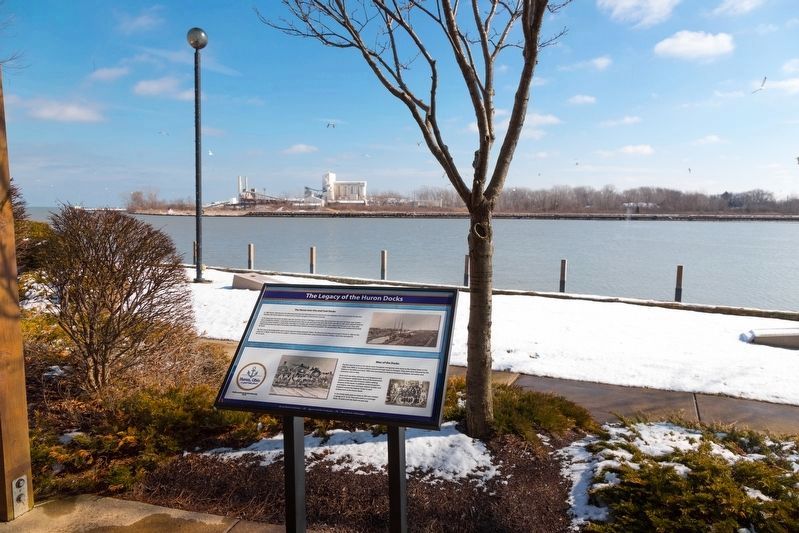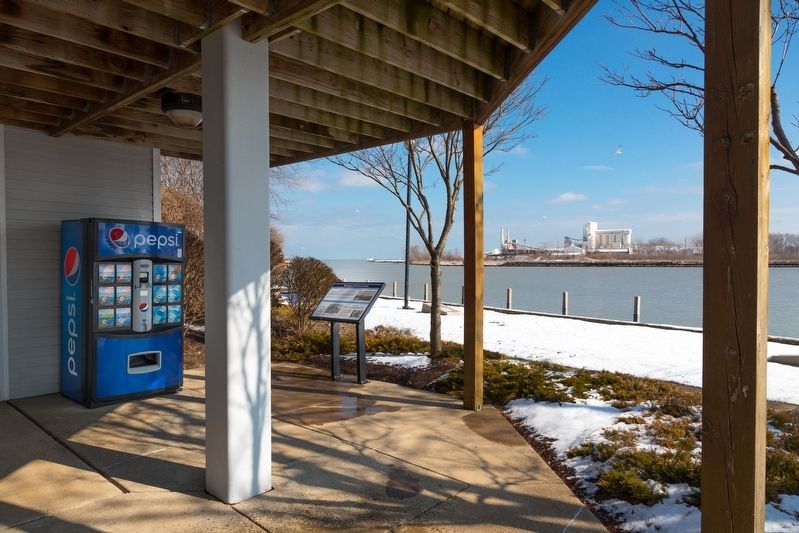Huron in Erie County, Ohio — The American Midwest (Great Lakes)
The Legacy of the Huron Docks
The Huron Iron Ore and Coal Docks / Men of the Docks
The Huron Iron Ore and Coal Docks. In 1882 Huron, Ohio became the Wheeling and Lake Erie Railroad’s port on Lake Erie for the shipping of iron ore and coal. For the next 100 years the docks played an integral part in Huron's progress and economic growth.
In the early years the docks handled coal, iron ore from mines in Michigan, and lumber that arrived by ship and rail. Boats were loaded and unloaded by whirleys, small steam-powered cranes that ran up and down the east side of the new slip on rails which allowed them to be placed where needed. A small boiler mounted in a wooden cab worked a hoisting system that raised and lowered a tub. They were called whirleys because after the buckets were filled they whirled around to be emptied. The dockworkers filled and emptied the buckets by hand.
The first ship to be loaded with coal in Huron was the sailing schooner Pelton. The first iron ore shipment arrived in Huron in 1883 on the schooner LC Butts. It took 16 men to unload 7,720 tons of ore in three days using shovels and the whirleys. Each man was paid $6 for his work.
Men of the Docks. The first men to work on the docks were Hungarian immigrants who came to the United States in the 1880s and 1890s to escape political turmoil and high taxes in Hungary. They were soon followed by the Italians in the 1890s and early 1900s who journeyed to America because of disease, starvation and economic crisis in Italy.
Dock work was dirty, strenuous, and dangerous, but the immigrants needed jobs. Most of the newcomers settled on the east side of Huron, within walking distance of the docks. In addition to the Hungarians and Italians, men from Germany, Ireland, Sweden and England crossed the Atlantic Ocean to seek employment at the Huron docks.
In the docks’ early years as many as 300 men worked in gangs of 21 to 42. They were paid on a tonnage basis, 14 cents a ton-for both ore and coal.
Erected 2018 by the Huron Historical Society.
Topics. This historical marker is listed in these topic lists: Industry & Commerce • Waterways & Vessels. A significant historical year for this entry is 1882.
Location. 41° 23.671′ N, 82° 33.229′ W. Marker is in Huron, Ohio, in Erie County. Marker can be reached from the intersection of Main Street and Cleveland Road West. It is at the Huron Boat Basin. Touch for map. Marker is at or near this postal address: 330 Main St, Huron OH 44839, United States of America. Touch for directions.
Other nearby markers. At least 8 other markers are within walking distance of this marker. The Wright House and the Underground Railroad/Old Main Street (within shouting distance of this marker); The War of 1812 (within shouting distance of this marker); a different marker
also named The Legacy of the Huron Docks (approx. 0.2 miles away); John Baptiste Flemmond (approx. 0.2 miles away); Huron / Erie County (approx. ¼ mile away); Christ Episcopal Church (approx. ¼ mile away); The Huron Playhouse (approx. ¼ mile away); World War II (approx. ¼ mile away). Touch for a list and map of all markers in Huron.
More about this marker. This interpretive panel shows three photographs, one of sailing ships at the docks, another of railroad workers posing in front of Wheeling and Lake Erie Railroad locomotives, and the third of dock workers posing in front of a dock building.
Credits. This page was last revised on May 30, 2020. It was originally submitted on May 30, 2020, by J. J. Prats of Powell, Ohio. This page has been viewed 295 times since then and 44 times this year. Photos: 1, 2, 3. submitted on May 30, 2020, by J. J. Prats of Powell, Ohio.


